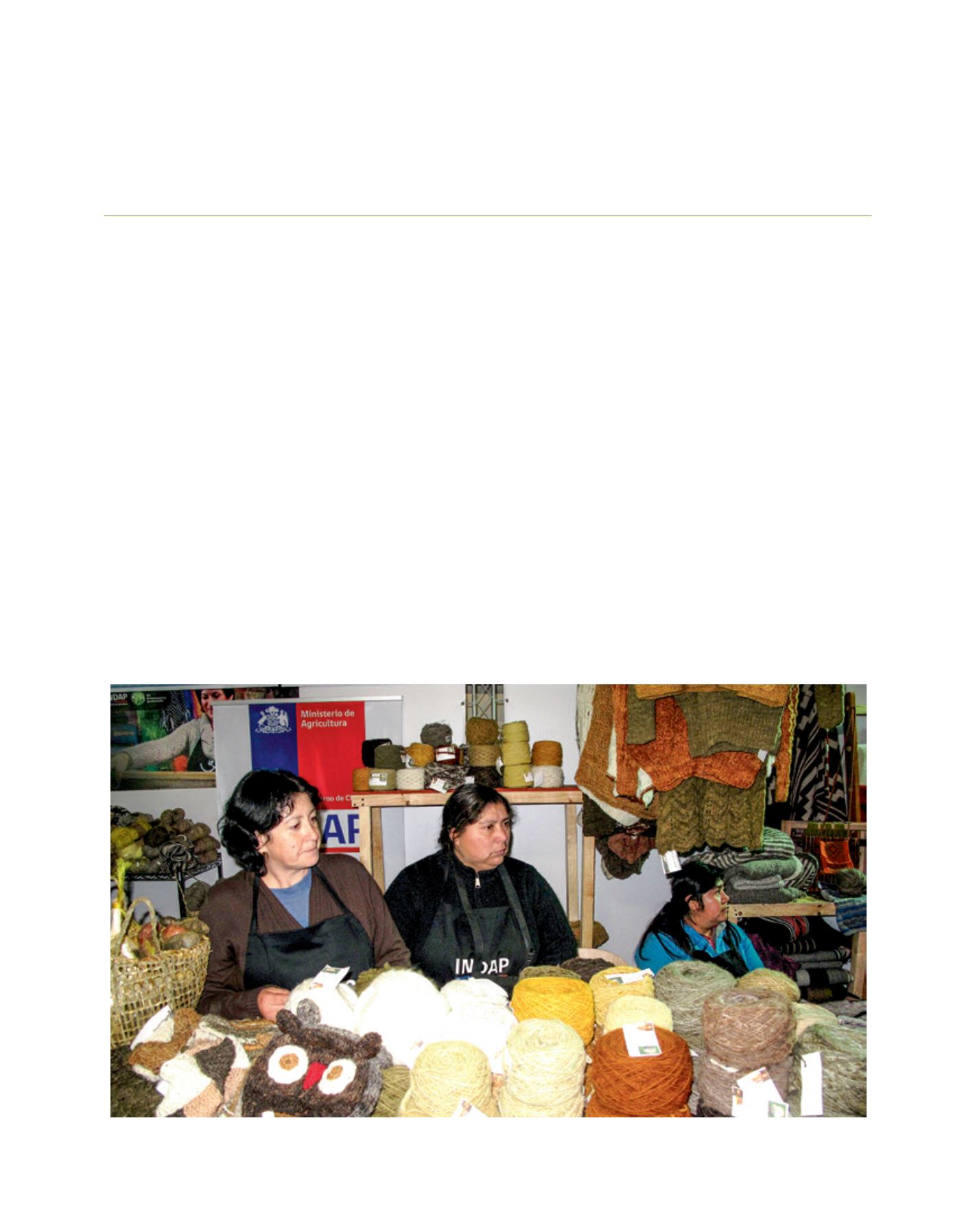

[
] 132
The Agricultural Development Institute’s work
in Chile: promoting local economic development
Carlos Furche, Minister of Agriculture and Octavio Sotomayor, Director, Agricultural Development Institute, Chile
P
easant family agriculture in Chile comprises some
260,000 farms, equivalent to almost 90 per cent of
all production units in the country.
From an economic standpoint, this segment contributes 22
per cent of the gross value of production generated by Chilean
agriculture; owns 25 per cent of the assets; controls 44 per
cent of the surface area expressed as Basic Irrigation Hectares
(hectare equivalent of a same quality) and 38 per cent of the
irrigated area; and generates over 60 per cent of agricultural
employment. Its role in food production is significant, at
around 40-50 per cent of the value of annual production of
crops, vegetables, meat and bovine milk. The average size of
a peasant farm is 17 physical hectares.
One of the characteristics of peasant family agriculture is
its heterogeneity, which is expressed in a variety of produc-
tion systems, physical and economic sizes, technology and
productivity levels, and access to goods and services, among
others aspects. In this context, it is possible to recognize
two major segments to establish differentiated policies and
strategies. First, a group formed by producers that support a
multi-activity economic development strategy, that is to say,
combining self-employment on the farm with other activi-
ties outside it that allow the farmers to complement their
income. This group represents almost 60 per cent of peasant
family agriculture, equivalent to about 155,000 farms. The
farmers’ gross income from agriculture on the property
amounts to US$5,000 per year, which is complemented
by income from working as temporary and/or permanent
employees and social subsidies. Rural poverty, which still
amounts to 13 per cent of the country-dwelling population,
is concentrated in this segment.
The second group corresponds to what has been called the
‘commercial’ segment, which corresponds to producers with
greater productive resources, allowing them to deploy an
economic strategy based on their activity on the farm. They
Image: INDAP
Many family farmers combine self-employment on the farm with other income-generating activities outside it
D
eep
R
oots
















